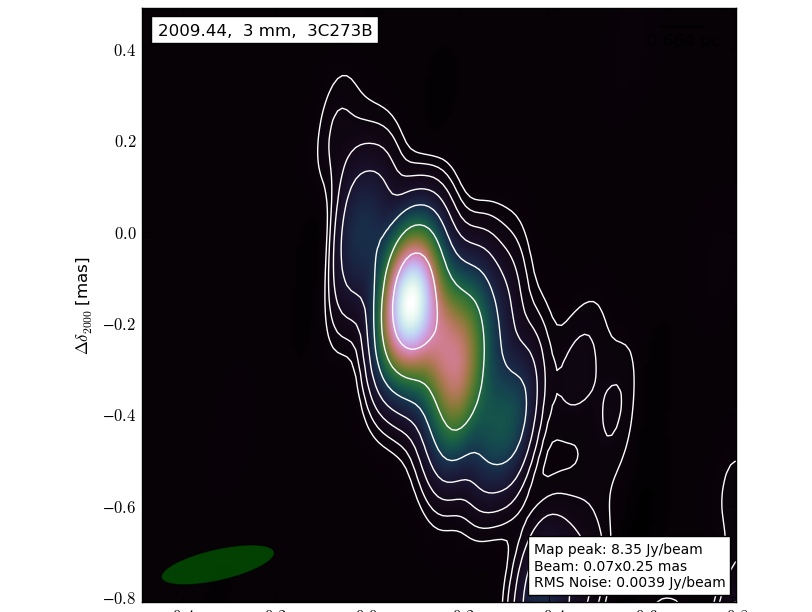Daily Image
28-05-2015Today's colloquium: The mm-VLBI view of Gamma-ray blazars.
| Submitter: | Jeff Hodgson (MPIfR) |
| Description: | Blazars are a Gamma-ray emitting phenomena where jets produced by the super-massive black holes (SMBH) of Active Galactic Nuclei (AGN) are directed towards the Earth. Using Very Long Baseline Interferometry (VLBI) at mm wavelengths, we can resolve these jets to sub-parsec scales. In VLBI images of blazars, they typically exhibit a so-called "core-jet" morphology, where there is a bright, unresolved "core", with optically thin components travelling away from the ``core'' at apparant super-luminal speeds. What is the physical nature of the "core"? Is it close to the SMBH or is it far downstream? Can the physical conditions within the VLBI jets tell us about how the jets and Gamma-rays are produced? We find that at mm-wavelengths, blazars tend to exhibit two or more quasi-stationary features with either exhibiting "core-like" features, suggesting that they both could be similar or related phenomena. The emission we observe at radio frequencies is thought to be produced by synchrotron emission due to relativistic electrons gyrating around magnetic field lines. At longer wavelngths, this emission is self-absorbed and opaque, but at mm-wavelengths, it becomes transparent. We find that super-luminally travelling components often correlate with both Gamma-ray emission and optically thin emission when they pass these stationary features. Hence, we suggest that these stationary features are consistent with being either recollimation or oblique shocks caused by the overpressure of the jet relative to the external medium and that Gamma-ray emission is sometimes due to travelling disturbances within the jets passing these shocks. Using multi-frequency VLBI, we can also derive estimates of the magnetic field strength and spatially resolve these strengths as a function of separation from the ``core''. This allows us to not only measure how the magnetic field strength drops further from the central SMBH, but also how far the ``core'' is from the SMBH and hence estimate the strength of the magnetic field at the base of the jet (presumed to be at or near the SMBH). Based on the analysis of 6 sources and one in-depth analysis of the source OJ 287 including full kinematics and the inclusion of lower frequency VLBI data, we find that the ``core'' is approximately 1-3 parsecs downstream of the jet base. The extrapolated magnetic field strength at the jet base is ~5-20 kG - which is consistent with magnetically launched jets, at or near their theoretical maximums. If this is the case, this could offer a "standard quantity" that could potentially be measured independent of redshift. |
| Copyright: | Jeff Hodgson (MPIfR) |
| Tweet |  |
